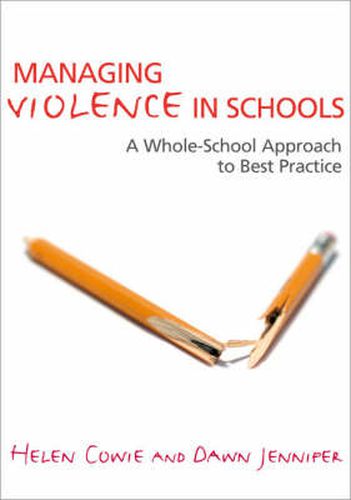Readings Newsletter
Become a Readings Member to make your shopping experience even easier.
Sign in or sign up for free!
You’re not far away from qualifying for FREE standard shipping within Australia
You’ve qualified for FREE standard shipping within Australia
The cart is loading…






This timely text, written by experts in research, practice and training in the field, proposes a whole-school community approach to the reduction and prevention of school violence. Underpinned by recent research findings, the book is illustrated throughout with case studies, examples of good practice in action, ideas and resources including exercises, activities and checklists. The book covers:
personal characteristics of perpetrators, victims and bystanders
role of the family
ethos and culture of the school
quality of interpersonal relationships at school
quality of the learning environment of the school
links between school and community The authors’ approach aims to promote non-violence , improve the climate of the school, enhance relationships among staff, pupils and parents, and to support the emotional health and well-being of all members of the school community. Strategies include preventative methods, provision for the individual needs of pupils and peer support, emotional literacy and restorative practice.The authors also provide guidance on how to create a shared understanding of school violence, how to prepare for change and how to carry out an effective needs analysis in order to successfully address the issue. This book is essential for practitioners, students in education and school management as well as local educational advisors.
$9.00 standard shipping within Australia
FREE standard shipping within Australia for orders over $100.00
Express & International shipping calculated at checkout
This timely text, written by experts in research, practice and training in the field, proposes a whole-school community approach to the reduction and prevention of school violence. Underpinned by recent research findings, the book is illustrated throughout with case studies, examples of good practice in action, ideas and resources including exercises, activities and checklists. The book covers:
personal characteristics of perpetrators, victims and bystanders
role of the family
ethos and culture of the school
quality of interpersonal relationships at school
quality of the learning environment of the school
links between school and community The authors’ approach aims to promote non-violence , improve the climate of the school, enhance relationships among staff, pupils and parents, and to support the emotional health and well-being of all members of the school community. Strategies include preventative methods, provision for the individual needs of pupils and peer support, emotional literacy and restorative practice.The authors also provide guidance on how to create a shared understanding of school violence, how to prepare for change and how to carry out an effective needs analysis in order to successfully address the issue. This book is essential for practitioners, students in education and school management as well as local educational advisors.